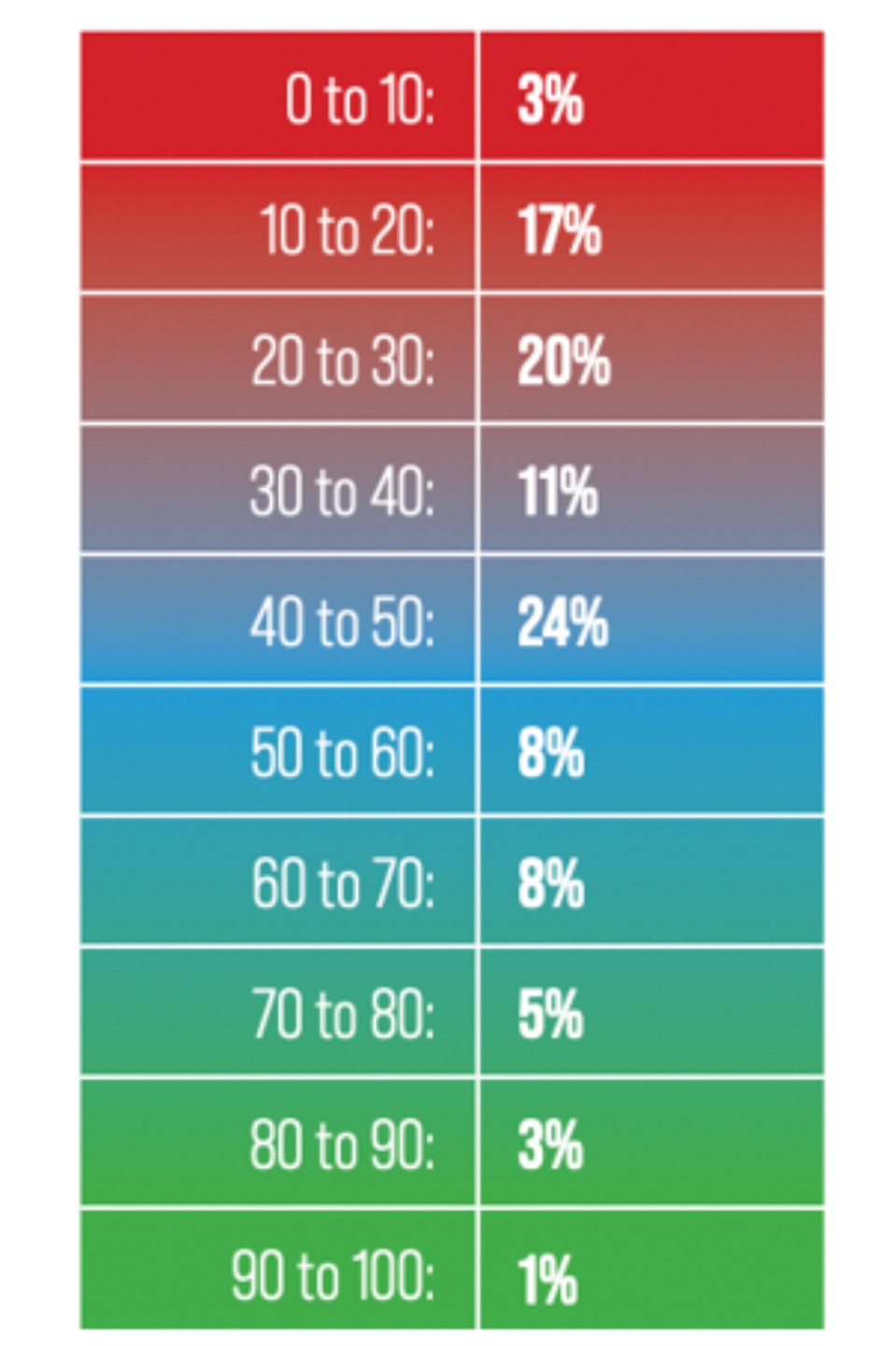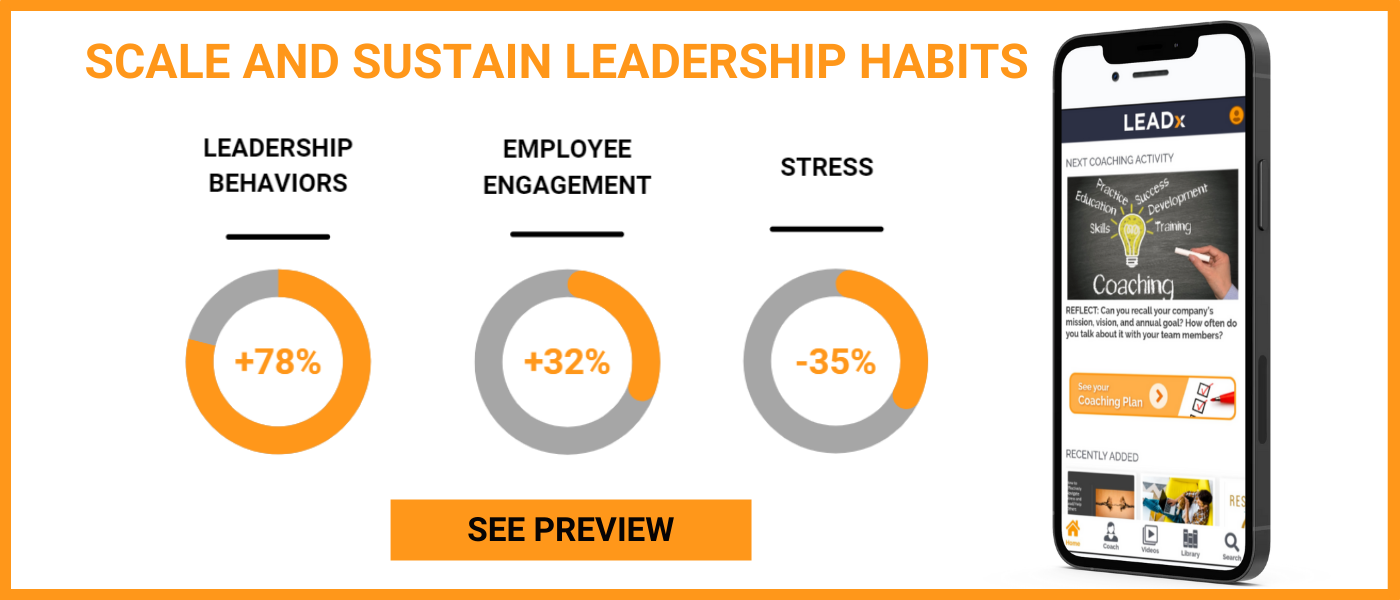
The 2024 LEADx Leadership Development Benchmark Report just came out. The 23-page report drew on an in-depth survey of 145 companies as well as qualitative interviews with over 50 CPOs and heads of leadership development. Entitled “Leadership Development Must Prove Its Value in 2024,” it covers:
- Top priorities for 2024
- The most in-demand skills for 2024
- Change in average budget and team size since 2023
- How leadership development professionals use AI in their work
- And much more!
What follows are the nine of the most important insights from the report. Bring these insights to your company and your career and you might just gain that competitive edge you’re looking for.
 1. Budget & Team Size Shrunk—Dramatically
1. Budget & Team Size Shrunk—Dramatically
The average budget and team size both decreased by over 70% since 2023. This aligns with what I’ve heard in my interviews with heads of leadership development: There have been drastic layoffs and budget cuts.
As often happens in tough times, loss of budget and resources can trigger a big “rethink moment.” For leadership development professionals, this has come in the form of a strong shift in mindset. Nowhere is that more apparent than in the top five priorities list for 2024.

2. Proof of Impact Became a Top Priority
Of the top five priorities, three link directly to proof of impact:
- Employee Engagement
- Measurement & Data
- ROI
None of these showed up as priorities in 2023. This goes to show just how much rethinking is happening in leadership development. Leadership development professionals see the writing on the wall: If they can’t prove their value, they’re going to lose even more budget and resources. While this has always been true, it became a reality in 2023 due to tougher economic conditions.
My bet is that long term this will prove to be a healthy growth moment for leadership development. Short-term, it may be painful as leadership development professionals get tasked with “doing more with less” both in headcount and budget.
3. The Top 4 Metrics to Prove Value in 2024 (All Are Impact-Based)
Naturally, the next question on everyone’s mind: What will I measure to prove my impact? The top four measures were:
- Employee Engagement
- Retention, Turnover, & Promotion
- Manager Effectiveness
- Behavior Change
You can see how any leadership development professional who shows improvement across one of these four metrics would be well-positioned to express their work’s value.
4. Measuring Business Impact Will Be New for Most
Despite being eager to measure business impact, most did not in 2023. Less than half of leadership development professionals measured behavior change (39%) and business impact (22%). Yet, nearly 90% measured learner reaction.
Starting fresh isn’t inherently bad. It means you have an opportunity to build a strong foundation. It also means you don’t have to overcome bad habits or escape expensive contracts. It’s an opportunity to set up a new system of measurement that will help show your value for years to come.
5. The Most In-Demand Leadership Skills Are ‘Tried and True’
While priorities may shift year to year, the top ten most in-demand skills remained essentially the same. Here are the top three:
- Coaching Skills for Managers
- Leading Change
- Feedback
All three made the top ten last year, and coaching skills and leading change remained the top two for the second year in a row. This shows that the “classic” topics are here for a reason. To drive impact, you don’t necessarily need to reinvent the wheel in terms of what you train. The difference is in how you train these topics and how you set out to measure improvement.
6. The Top 5 Challenges Are Tied to Impact (Or Lack Thereof)
It may not come as a surprise that the top five challenges for leadership development professionals each tie back to proving impact:
- Learners Say “no time for training” — Prove impact, win learner buy-in.
- Budget — Prove impact, win budget.
- Lack of Manager and C-level Support — Prove impact, win C-level buy-in.
- Participation — See bullet one.
- L&D Headcount — See bullet two.
2024 needs to be the year that leadership development digs its way out of the “cost center” stereotype. Setting up guardrails against each of the above challenges will go a long way.
7. The Knowing-Doing Gap Still Plagues Leadership Development
When I talk about impact, I don’t just mean measurement. Sure, that’s a huge piece of proving value. But, the other equally big piece is your success at creating value. To create value, you have to overcome the knowing-doing gap. You have to help your learners build new positive habits. If you don’t properly reinforce learning and make it stick, you won’t have nearly as big an impact as you could. If learning doesn’t get applied, no amount of measurement will save you.

On that note, 75% of leadership development professionals estimate that less than half of what they train gets applied on the job. See below for a more in-depth breakdown. A concerning 17% indicated that less than 20% of what they train gets applied on the job.
When it comes to the knowing-doing gap, many companies expressed to me that they feel “stuck.” They can’t afford to pull learning through via one-on-one coaching, especially at the emerging leader and first-line leader level. And at the same time, they know workbooks, job aids, and asking leaders to practice isn’t enough.
For that reason, I predict many leadership development professionals will begin to embrace learning transfer tech like:
- Personalized Behavioral Nudges: A simple way to double, triple, or quadruple the value of an existing assessment or training program. You can take a one-and-done program/assessment and add a year-long tail of strategic exercises and key insights.
- On-Demand Coaching: Hugely expands the number of employees that you can offer coaching to. Meets employees at the exact moment that they need help with a challenge.
- Group Coaching: A scalable and affordable way to give more leaders access to coaching. And, peers learn from each other’s insights, challenges, and perspectives.
8. Leadership Development Is Mandatory at Just 54% of Companies
This stat from our leadership development benchmark survey made me sad. We asked: Is leadership development mandatory at your organization?
And only 54% said “yes.”
Leaders are responsible for the happiness, engagement, and health of their direct reports. Leaders drive performance and accountability. Leaders reinforce culture. Leaders have a sacred duty. Yet, 46% of companies make leadership development optional.
To give all this power and authority to someone and say that they don’t have to complete any leadership development training is a huge oversight. On a positive note, this number did increase by 10% from last year, so it does seem to be moving in the right direction.
9. Only 24% of Leadership Development Professionals Use AI
Since the explosion of AI in the second half of 2023, many industries have already seen a fundamental shift in how work gets done. Leadership development hasn’t seen quite the same degree of change. At least not yet. As of now, just 24% of leadership development professionals use AI in their work.
They indicated three primary use cases:
1. To brainstorm and create content: Leadership development professionals said they used AI to come up with ideas for content, put together microlearning, and schedule out minute-by-minute agendas for sessions. This use case makes sense as it aligns with the most common way AI is used across industries—Chat GPT.
2. Personalized behavioral nudges: Nudge technology makes it possible to hit learners with multiple, personalized touchpoints per week. It’s an affordable and scalable way to implement sound learning science on a budget. It’s the natural solution to not being able to afford and scale one-on-one coaching to emerging leaders and first-line leaders.
3. Coaching simulations: A number of leadership development professionals indicated that they use AI to create realistic simulations for leaders. For example, a leader might hold a practice feedback conversation with a direct report.
With only 24% using AI, now is the perfect time for you to start. You can learn from those who are ahead of you and still be an early adopter.
A Need to Simplify
It’s not fun to see budgets and teams get hit so hard, especially since we (leadership development professionals) all know the power of the work we do. When your company is struggling isn’t that really the perfect moment to double down on leadership development? But here’s the good news: Based on the data in this report, an industry-wide “rethink” is already underway. As the industry gets back up and dusts itself off, those who set up a great plan for business impact will stand out in 2024.







